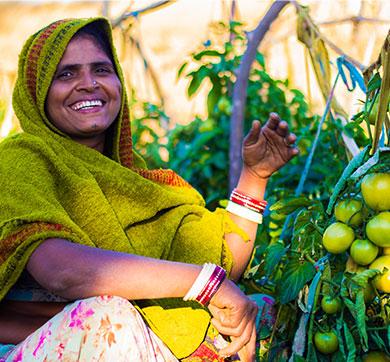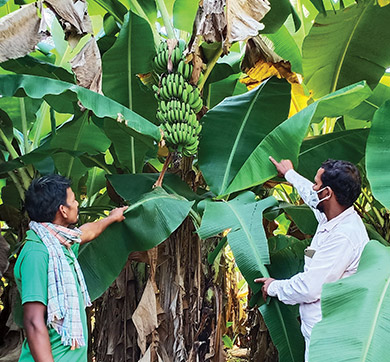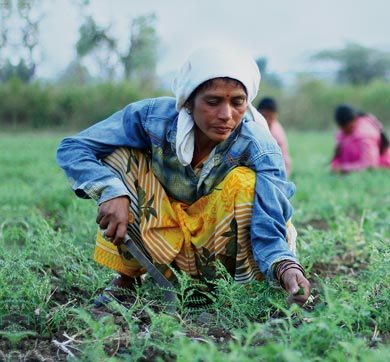August 2022 | 1189 words | 4-minute read
Surrounded by deep forests, Janumpiri village in the interiors of Jharkhand’s Khunti district is a cluster of 78 households where Birang Hassa lives with her family.
Like most villagers, her family also depended solely on agriculture for subsistence, but the Hassa family’s plight was worse because they owned a small landholding and relied chiefly on the unsteady income of Birang’s husband who worked as a migrant labourer.
Lac programme
2015 was a turning point in Hassa’s life when she joined the women’s self-help group (SHG) in her village. She and her husband were introduced to the livelihood enhancement Lac programme as a livelihood layer, under the Lakhpati Kisan: Smart Village Programme — a flagship initiative of the Tata Trusts and the Collective for Integrated Livelihood Initiatives (CInI). The programme focuses on livelihood prototypes layering in agriculture, livestock, non-timber forest produce and water resource development at the community level.
“With its singular focus on women farmers with small landholdings, especially from scheduled tribes, the Lakhpati Kisan initiative is a concerted effort to fight institutionalised oppression, empower tribal women to become leaders in their community institutions and help them meet their aspirations. It is part of a convergent ecosystem where multiple stakeholders, including communities, governments and private sector players align towards the common goal of making a sustainable difference in the lives of disadvantaged communities in the region,” says Sirshendu Paul, regional manager of Tata Trusts’ Lakhpati Kisan initiative.
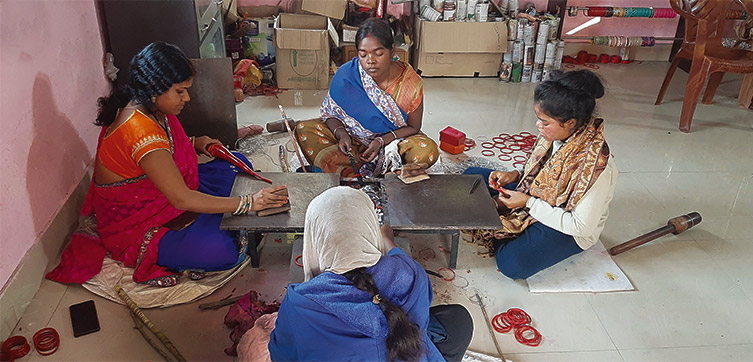
With a loan from the SHG, Hassa’s family started cultivating lac, with scientific know-how from CInI, as a primary activity along with cultivation of high-value crops as a secondary one. Today, with a steady annual income of more than Rs 1 lakh through lac cultivation alone, the Hassa household is one of the most enterprising and progressive ones in Janumpiri.
In India where more than half the population still depends on the vagaries of the weather for agricultural activities, an alternative and sustainable source of income generation is a requisite.
The lac value chain
Traditionally cultivated in Jharkhand, lac was never exploited for its income-generating potential. With 5,766 farmers joining the Lakhpati Kisan programme with lac layering along with agriculture, close to 336 households in the state have become lakhpati farmers, just by cultivating lac. Besides, 10 entrepreneur farmers are working as value chain actors and service providers to households, to mitigate critical gaps in lac production systems.
With new techniques being introduced for lac cultivation, such as dipping treatment to make it pest-resistant and use of machinery to extract resin to fetch better prices, cultivating lac is being viewed as a gainful employment activity.
“Cultivating lac is not just a source of income; it has ecological implications as well. As the trees are used as hosts, it helps prevent deforestation,” states Paul, adding, “CInI’s Lac programme aims to foster a ‘lac-value-chain market’, comprising the lac farmers, lac processors who extract the resin, and makers of lac handicrafts and jewellery.”
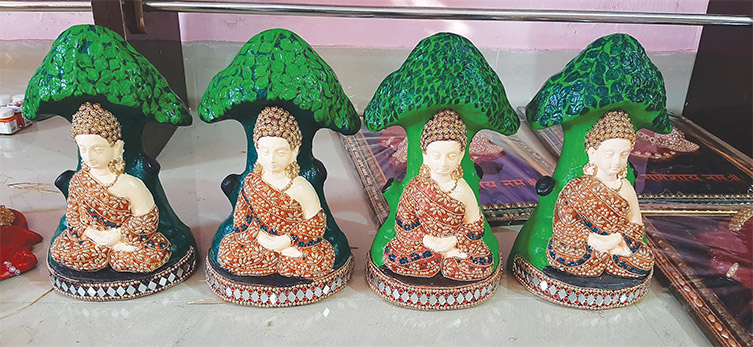
Preproduction and production
Host tree management, one of the first pre-production activities in the lac value chain, includes climbing the trees to regularly prune the branches. The service providers ensure adequate safety measures are taken to prevent any mishaps while pruning.
CInI’s focused intervention on introducing scientific methods for lac cultivation — including quality brood lac, proper pruning and harvesting, among other things, undertaken with support from institutions like the Indian Institute for Natural Resins and Gums (IINRG) — has helped to raise the average income of households engaged in lac cultivation up to Rs 48,000 initially, and, for families like the Hassas that harvest two cycles of lac in a year up to Rs 130,000 lakh annually.
Fact file
Lac cultivation, extensively practised in India, Bangladesh, Thailand, China, Laos, Mexico and Vietnam, is a valuable non-timber forest product with use in various applications such as making of jewellery or decorative items, paint, electrical, automobile, cosmetic, adhesive, leather, wood furnishing and other industries, and even in medicines.
Lac is obtained from small lac insects, the most common being Kerria Laca, that colonise the branches of host trees and discharge resin or lac material. The branches coated with this resin called sticklac are cut and harvested, crushed and sieved to remove impurities, and then washed to remove insect parts and any other foreign material. The resulting product known as seedlac is processed into shellac by heating or by solvent extraction. In India, Jharkhand, with its rich natural resources, is the leading producer of lac, followed by Chhattisgarh, West Bengal and Maharashtra.
The Hassa family uses endemic tree species like the Ber (Indian jujube) and Kusum (Ceylon oak) as host plants for the two cycles of lac cultivation — July and January cycles. They also use solar-powered pruners to prune branches, practise rotated brood (newly hatched larvae) inoculation (July cycle brood is inoculated in the January cycle and vice versa) and ‘package of practice’ methods to improve the yield quality, and even harvest the produce with the help of solar pruners.
Post-production
Following newer scientific methods of production along with access to latest technology for a better yield have helped in the creation of brood-farm villages. Earlier the lac produced was sold one-on-one by individual farmers to local traders. Today, the women-led Farmer Producer Organisation (FPO) formed as part of the Lakhpati Kisan initiative aggregates all of the lac produced in a brood-farm and sells the entire produce, thereby ensuring a fair price to farmers. Timely payments made through the digital medium have eliminated the middlemen. FPO is also home to processing units, where members of the local community are trained to turn the harvested lac to semi-processed lac.
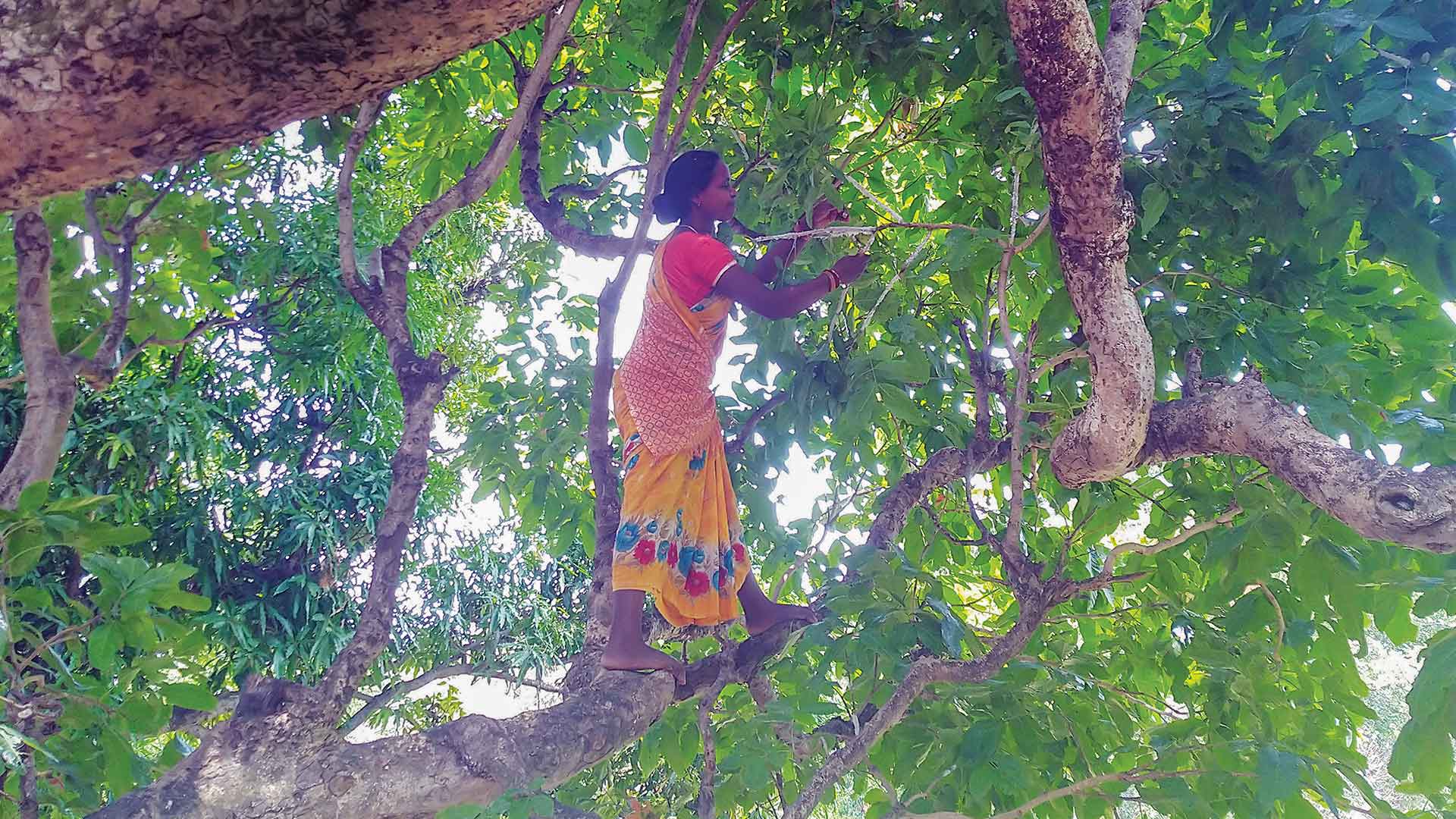
Gainful employment
In October 2017, CInI organised a 15-day programme to train 25 tribal women in making lac artefacts, resulting in the establishment of a unit in Kajri village in Hazaribagh district to manufacture lac bangles, where local women are gainfully employed. The unit is now part of the FPO.
In January 2018, lac artisans from Jharkhand participated in the Saras mela (exhibition) at Ranchi (state’s capital), where they sold bangles worth Rs 48,000, and later that year they netted Rs 24,000 at a handicrafts mela in New Delhi.
To promote and systematise the lac ecosystem, CInI even hired a designer from the National Institute of Fashion Technology to assess the quality of lac products, introduce new products and improve artisans’ efficiency in making items like pen stands, flowerpots, idols and photo frames. In 2021, a lac handicrafts e-catalogue was published to create an identity for artisans on various stakeholder and social media platforms. Over the years, new handicraft units have sprung up in the villages which today boast of 52 artisans and 2 master trainers who are upskilling newcomers in the field.
Going forward, Tata Trusts and CInI intend to institutionalise lac promotion through the FPO, by scaling up the artisanal skills of more rural women, especially those who are either landless or reverse migrants, and helping them use online platforms like Tata CLiQ, Amazon and Flipkart to sell their lac ware.
—Tejal Pandey










